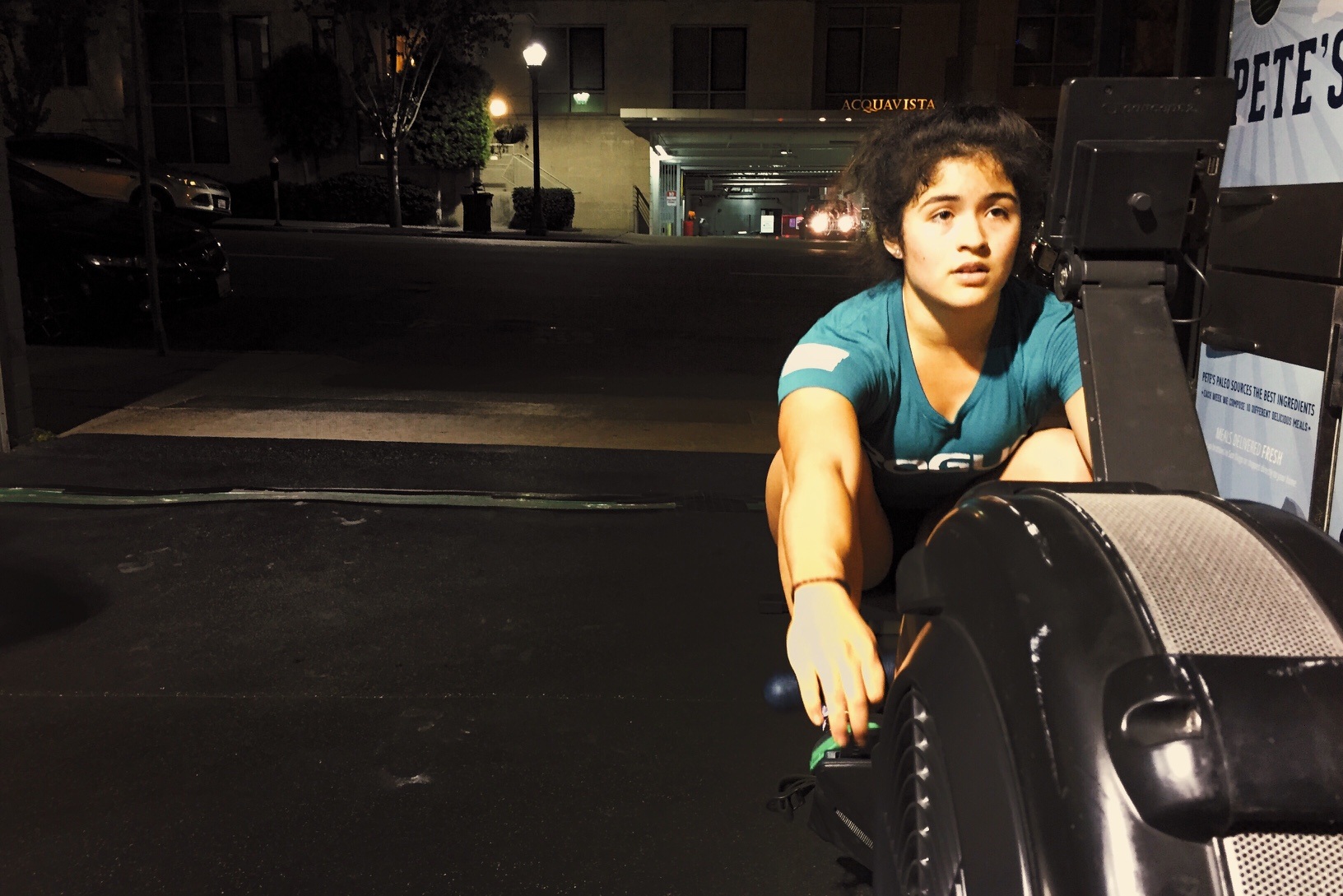
How Using a Sprint Start Can Change the Entire Outcome of Your Workout
What if you found a way to get an unfair advantage on any rowing workout 2000m or less? What if you could work hard for 30 seconds and then take it a little easier during the middle of your workout and still row the same pace you’ve done before and still beat your friends?
Sprint work on the Concept2 rowing machine is never easy. Neither is a 2k. If you’re reading this, you probably understand the discomfort that comes from any difficult rowing workout.
What is the Sprint Start?
First, understand the performance monitor measures and always works off of an average. It is constantly measuring the work you are doing and gives you an end result according to every single stroke averaged over the entirety of your workout.
The sprint start is the initial start of a rowing workout where the objective is to get the flywheel moving as fast as possible. The REASON you want the flywheel moving fast is because it manipulates the Concept2 Performance Monitor to give you a faster split.
The sprint start then focuses on keeping the split as fast as possible for a dedicated period of time to “anchor” the average split as fast as possible.
A faster split, if you followed the first statement means you will have a faster average initially. This is beneficial because you’re tricking the monitor into thinking you’re going much faster than you actually will during the rest of the workout.
Why Does it Work?
It works for two reasons. The Concept2 measures average’s as discussed in the previous section. If takes advantage of your natural energy systems available to your body. What we’re talking about is the phosphagen system, technically named the ATP-CP and it’s transition into the glycolytic system and fast glycolysis. In a nutshell, this energy system gives you immediate access to instantaneous energy that can sustain for upwards of 30 seconds.
You work explosively and with maximum effort for ~30 seconds, which your body can handle without sustained fatigue because it has the ability to produce energy fast enough. During this explosive time, you’re making the split move VERY fast relative to your standard pacing. So using the available energy systems, you’ve tricked the monitor into a faster split than you actually intend on using.
How to do a Sprint Start
The sprint start is made up of 15 total strokes. All of these strokes are made in an effort to maximize force and acceleration with less emphasis than usual on distance. So it’s made up of the following:
½, ½, ¾, Full, Full, followed by Full x 10.
What does it all mean? Working in reverse, a “Full” stroke is your regular stroke. You are catching the full distance of the stroke by sliding all the way forward to your regular catch and then taking a normal stroke.
A ¾ slide stroke, means you catch ¾ of the way up to the full catch instead of sliding all the way forward. This results in the handle being just past your toes when you take the stroke. The rest of the stroke is the same.
A ½ slide stroke means you “catch” half way up to a full slide catch. This means your handle makes it to about your shoe laces when you “catch” and take the stroke. The rest of the stroke is the same.
The final note of the sprint start is that you remove the swing of the hips from the stroke in an effort to decrease distance, but maximize speed and acceleration.
The first five strokes are taken with an emphasis on speed. The goal is to accomplish the strokes AS FAST AS POSSIBLE to get the split as fast as possible. The next 10 strokes are taken for POWER and meant to anchor the split as fast as possible.
On stroke 16, you add back the hip swing, bring your stroke rate way down, and make an immediate adjustment in power in order to not over-run your internal energy systems.
So for example, if your goal was to accomplish a 2:00.0 split for 2000m and during your sprint start you got down to a 1:30.0 split (not uncommon), then on stroke 16 you would make the jump from crazy fast, powerful strokes to a longer, rhythmic stroke and jump the split from 1:30.0 to 2:00.0 in one stroke.
Whatever you do, do not try to prolong this start. It will only end in ruin.
For a visual on how this works, check out this video:

When Should You Use a Sprint Start?
Use the sprint start with any distance 2000m or less. ONLY use the sprint start when rowing is the first part of the workout. DO NOT use the sprint start if you’ve already performed any other movement beforehand.
These are the hard and fast rules to abide by to make sure you use it, and use it well.
By taking interest in the start of your row, you set yourself up for a faster overall pace while spending less energy during the middle of the workout. Use the sprint start to gain an unfair advantage on your personal best times, your friends, and your competition. Your body and your 2k times will thank you.
No products in the cart.


